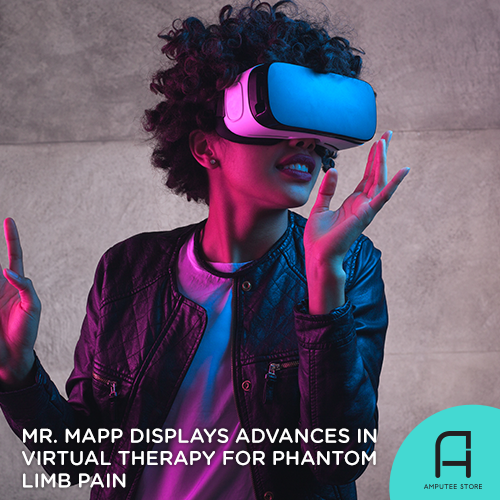Mr. MAPP Displays Advances in Virtual Therapy for Phantom Limb Pain
Researchers at The University of Texas at Dallas and the Veterans Affairs (VA) North Texas Health Care System have developed the latest iteration in virtual therapy for phantom limb pain. The system is called Mr. MAPP or Mixed reality system for Managing Phantom Pain.

The reigning theory of phantom limb pain is that, after amputation, the nerves in the residual limb send mixed signals to the brain. Mr. MAPP is designed to help the brain resolve those mixed signals. Dr. Balakrishnan Prabhakaran led research for the development of Mr. MAPP in collaboration with the VA.
Mr. MAPP consists of a virtual reality (VR) headset, a camera, and a laptop. It creates a virtual 3D model of the user’s missing limb. Wearing the VR headset, the user plays games that involve using the virtual model of the missing limb to complete tasks like bursting a bubble of stomping. The study participants were veterans treated at the Dallas VA Medical Center. They used Mr. MAPP in their homes during the four-week pilot trial.
According to Dean Peterson, one of the study participants, Mr. MAPP allows the user to fool their brain into seeing a leg and a foot. Peterson had been dealing with phantom limb pain since losing his lower left leg after a hunting accident 16 years ago.
Dean Peterson, one of the study participants, uses Mr. MAPP to treat his phantom limb pain.
The 67-year-old veteran said that Mr. MAPP helped reduce the pain that has often kept him up at night. Before the study, he said he received a limited supply of pain medication that did not wholly manage his phantom pain.
However, three weeks into the study, Peterson realized falling asleep was much more effortless as no pain bothered him at night.
While the study was limited to a handful of patients, the researchers are encouraged by Mr. MAPP’s potential to improve pain and physical functioning outcomes. As of this publication, they have a provisional patent and hope to conduct more clinical trials. Eventually, the goal is to license the technology to make Mr. MAPP more accessible to physical-rehabilitation providers as well as patients.
The researchers also hope that the system will become an alternative to opioid use and can be applied to other conditions that cause pain.
Another well-known treatment for phantom limb pain is mirror box therapy, which creates an illusion of the missing limb using a mirror and a box. However, according to Dr. Prabhakaran, it is typically provided only in a healthcare setting and could be more optimal. By using VR and augmented-reality technology, which superimposes real-world objects into virtual environments, Mr. MAPP improves on mirror box therapy.
According to Peterson, he has also tried mirror box therapy in the past without success. He said Mr. MAPP was more effective and easier to use.
What do you think of this latest development?











































































